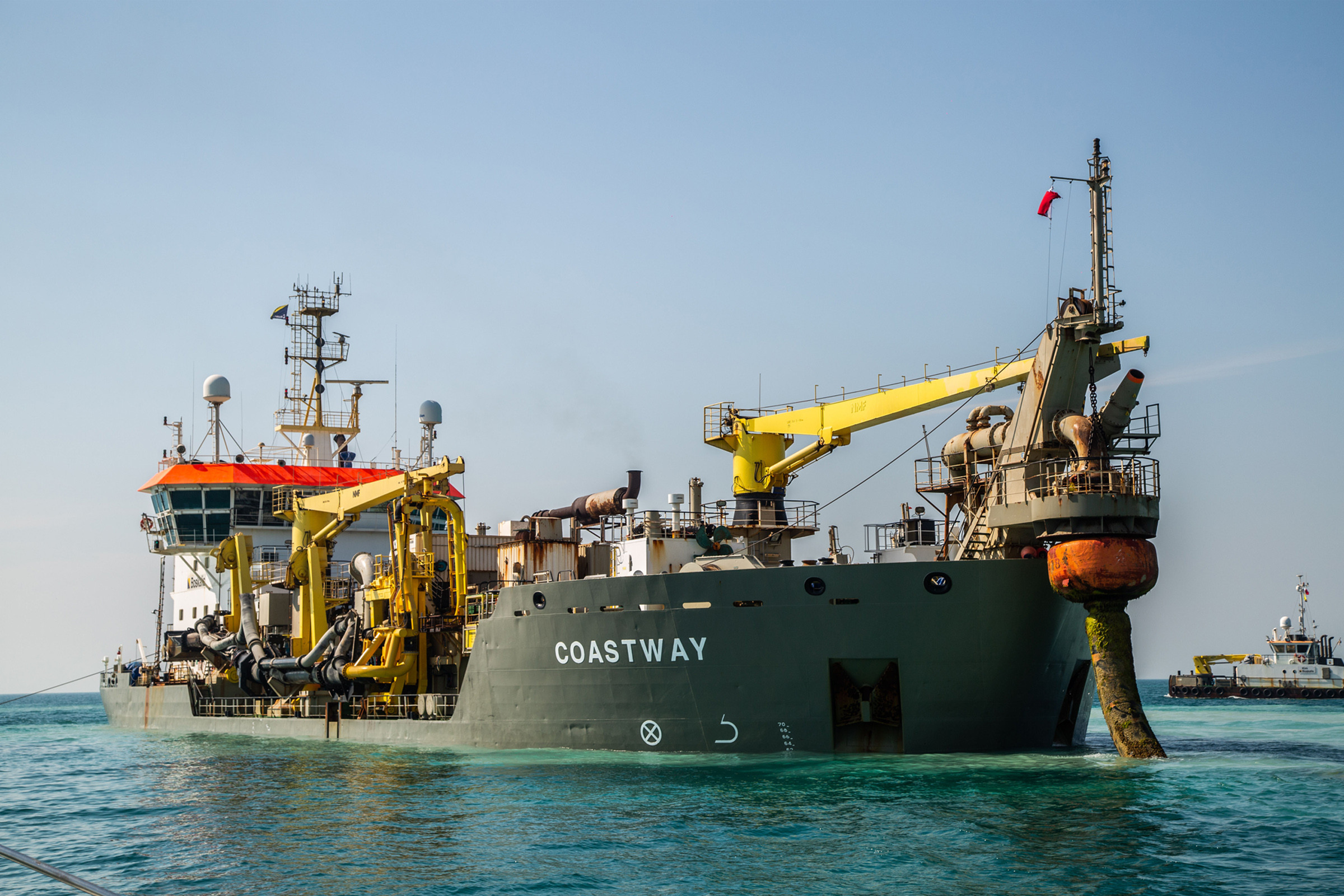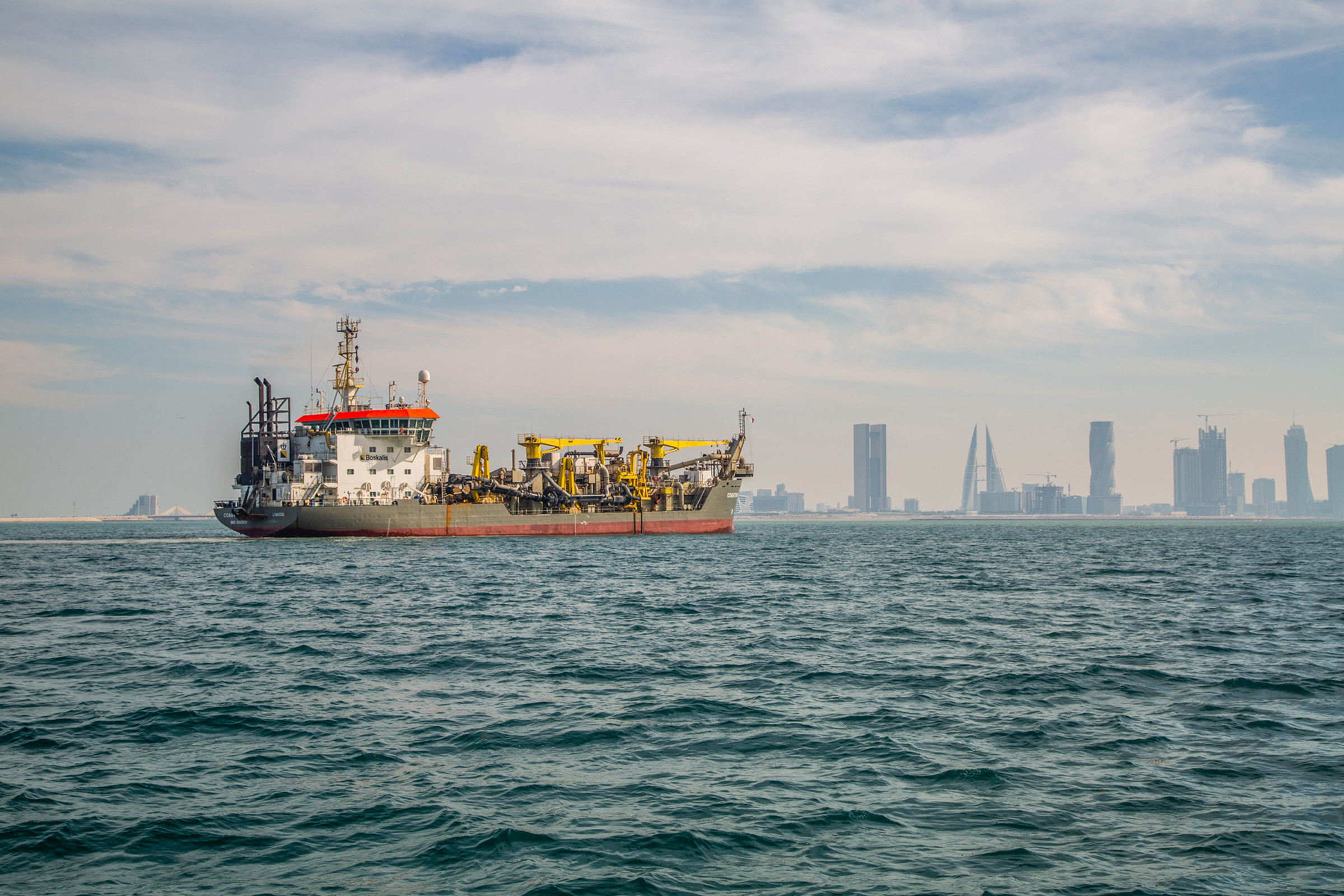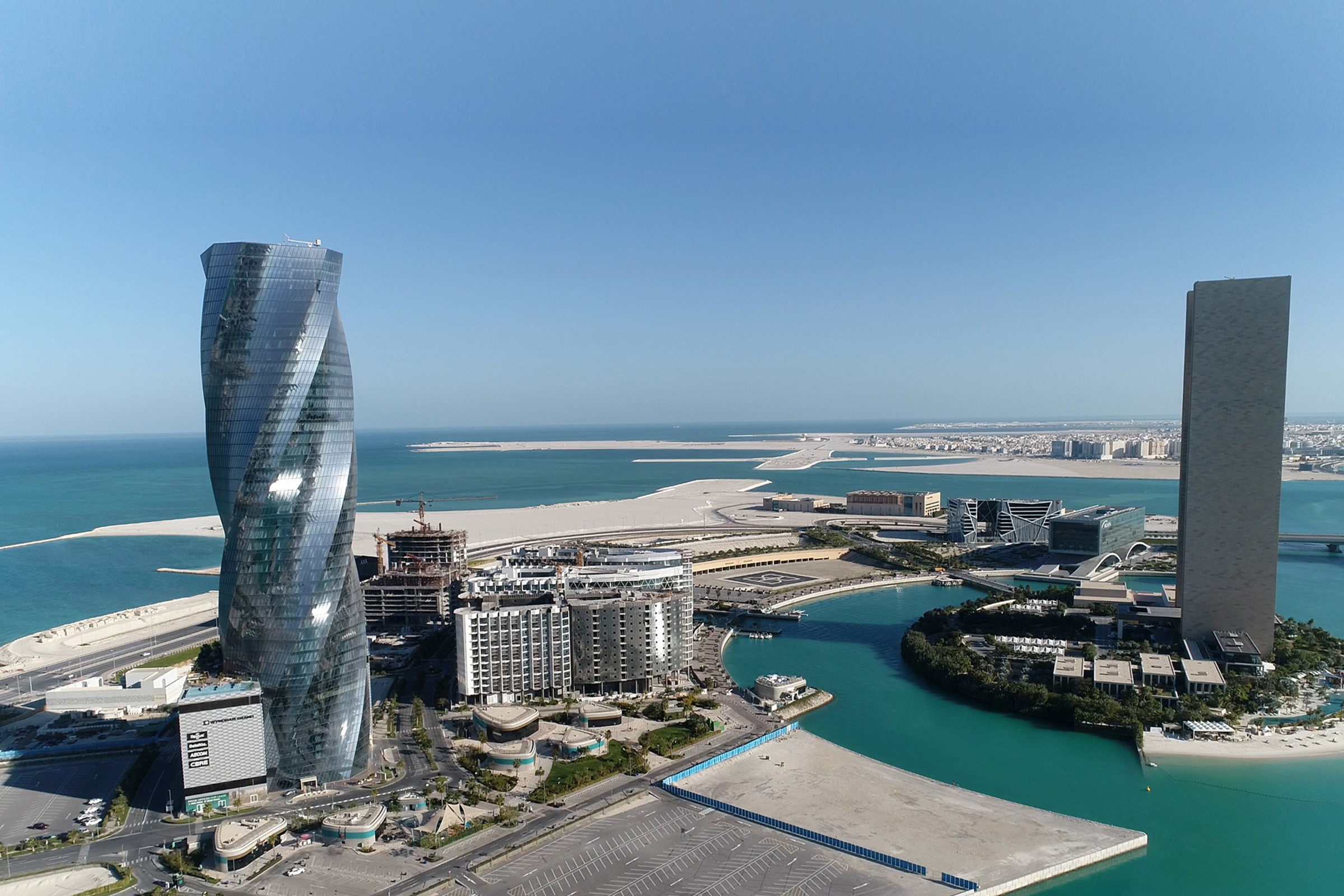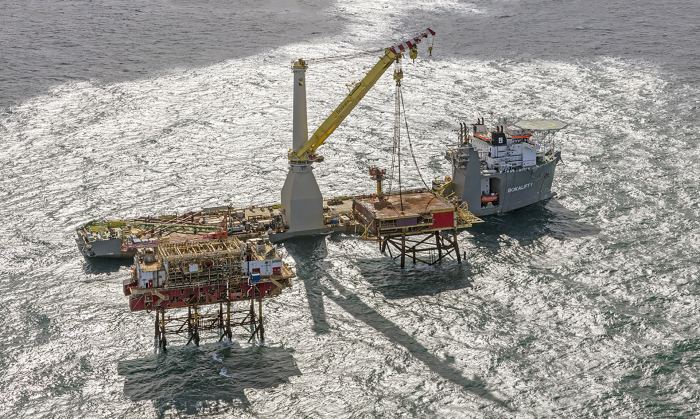Boskalis completed the second phase of the Busaiteen project in Bahrain in early 2021. The work involved the construction of a large sand causeway for a five-kilometer-long, six-lane motorway. During the first phase in 2018 and 2019, Boskalis had already constructed a three-kilometer-long embankment. As well as dredging, phase two included revetment work. In addition to environmental protection and safety, there was a strong emphasis in the project on community support and stakeholder management.
“Bahrain has continued to expand its territory in recent decades through numerous land reclamation projects. Boskalis executed many of these projects, including New Town and Water Gardens. So we have built up a good name in this country,” says business unit director Peter Devinck. Both phases of the project were for Bahrain’s Ministry of Works, as part of a long-term master plan developed by the government. “We executed the recent work in a residential area where the road network was under increasing strain. To improve the flow of traffic between the districts of Manama and Muharraq, it was decided to build a road in the sea. Our job was to construct a large sand embankment for this road,” explains Peter.
Sand and rock
The 8.2 million cubic meters of sand required for the project was brought in by the Boskalis trailing suction hopper dredgers Causeway and Coastway. The sand was taken from a borrow area twenty kilometers to the north-east of the project site. The hopper dredgers pumped the sand directly to the embankment after which it was hydraulically compacted. To protect the banks, a local subcontractor installed roughly 340,000 tons of rock, ranging from smaller rocks to large boulders weighing more than two tons that were brought in by truck from a quarry in Askar. The layers of rock were placed on approximately 180,000 square meters of geotextile.





Lessons learned
“To ensure continuity, we decided to execute phase 2 with almost the same team that completed the first phase,” says Peter. “Given the many challenges associated with COVID-19 and the fact that we were working with a range of local parties, this was a complex project. But the team did a great job.” Project manager Arjan van Bruggen: “One advantage was that we were able to implement several lessons learned from the first phase, such as the deployment of the most suitable equipment by the subcontractors. We also made improvements to communications with local workers, who had a better understanding of their own responsibilities and safety as a result. So we performed excellently in terms of safety: over a million hours worked without a lost-time incident.”
Environmental protection measures
“Our environmental protection measures were also essential,” says Arjan. “The waters around Bahrain include a vast area of mangroves and sea grass, and the waters in the southeastern part of Bahrain are also home to the second largest colony of dugongs (sea cows) in the world. In consultation with the authorities and in order to adhere to the environmental regulations of Bahrain, we implemented various precautions to prevent turbidity, including the use of silt screens and the construction of temporary dikes to safeguard the quality of the water during the reclamation work.”
Community support and stakeholder management
The project also included a range of activities for local society. “In one of the initiatives, we adopted the mission of a local organization that uses the proceeds from collected plastic to purchase special customized wheelchairs for the local community,” says Arjan. “We collected the plastic we used on the project, from plastic drinking bottles to the plastic waste from our vessels, and handed it over to this charity.”
Another initiative was the creation of a public garden in the vicinity of Al Dair as a gesture to the people living in the vicinity of the project. “That idea emerged from discussions with the client in the context of one of our Way of Working meetings,” says Arjan. “We outsourced the actual construction work to a local landscaping company. The Minister of Public Works presided at a ceremony to launch the project.”
In a third initiative, Boskalis assisted local fishermen to create new anchorages for their boats. “The project overlapped partially with the working area of the fishermen and some of them had to move when the work was being done. In circumstances like this, what matters is to explain clearly what you are doing,” says Peter. “Local stakeholder management was primarily the client’s responsibility but, as the company executing the actual work, we were closely involved. We assisted the fishermen in moving to new anchorages and provided them with anchor blocks to moor their boats. We also used an excavator to construct a slope so that they can launch their fishing boats quickly. The fishermen and our client were very pleased with that approach.”
